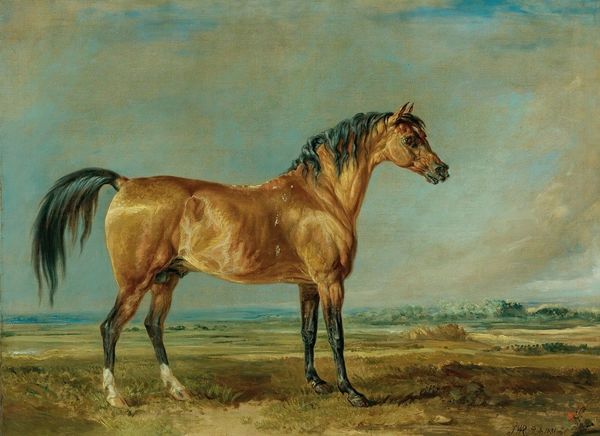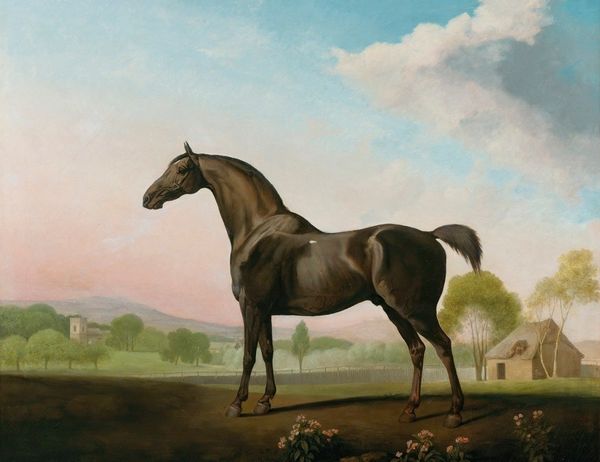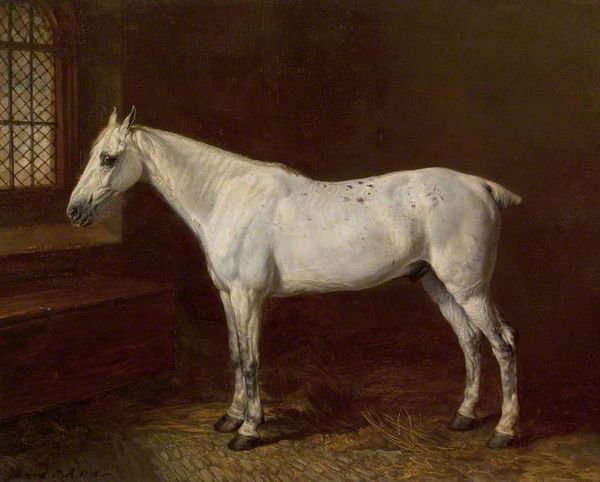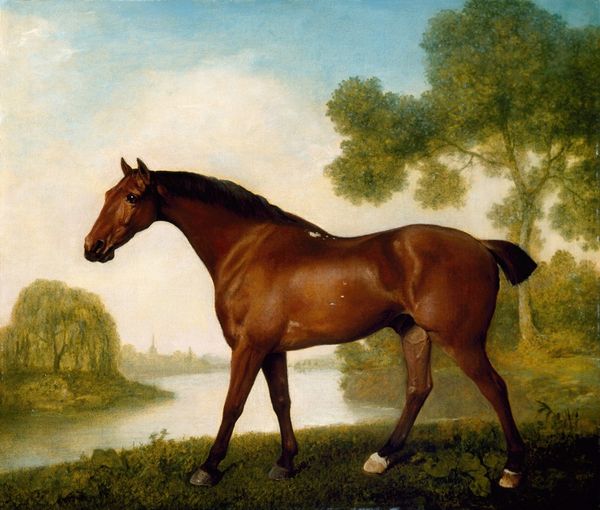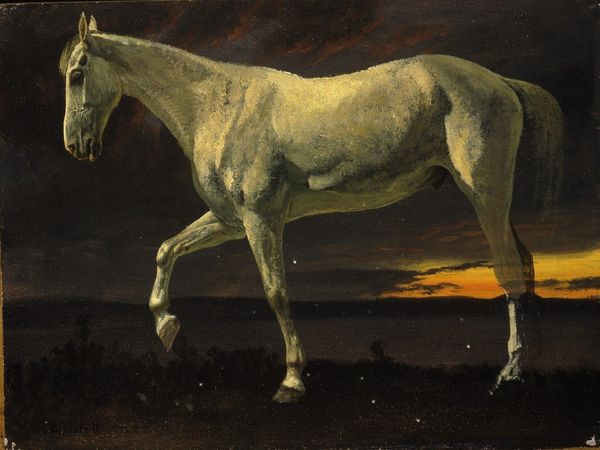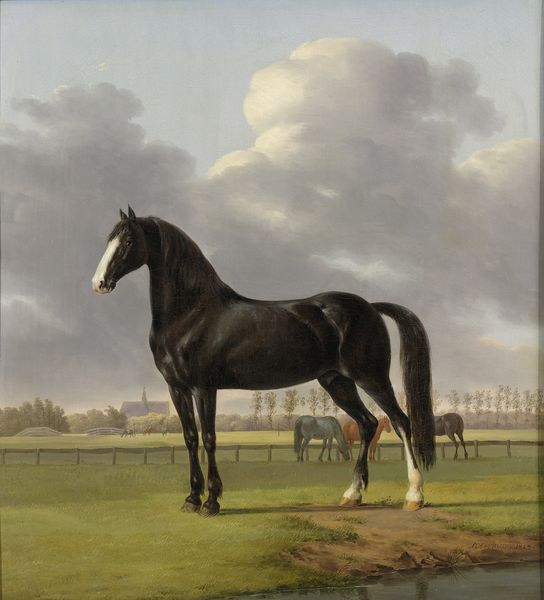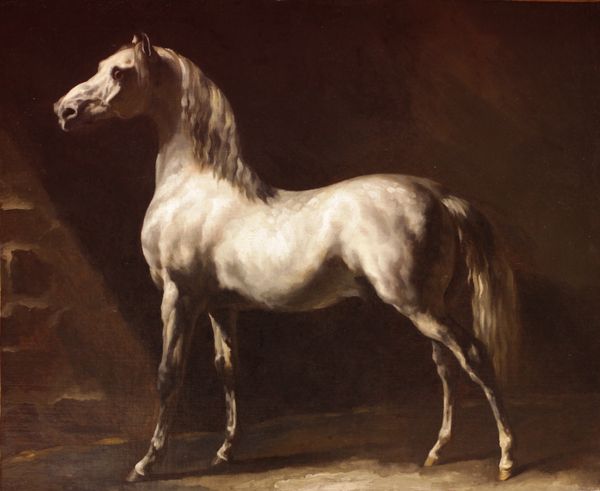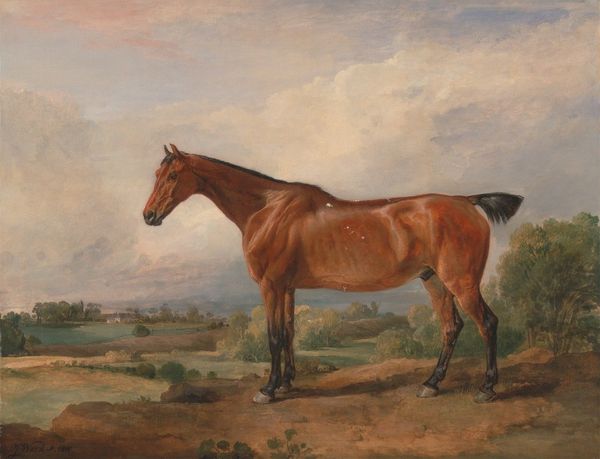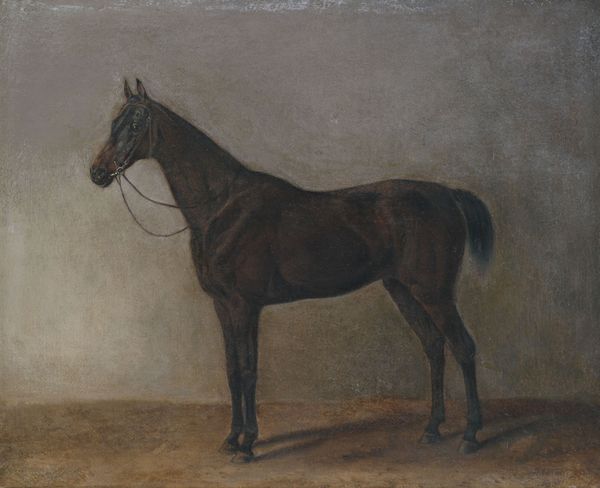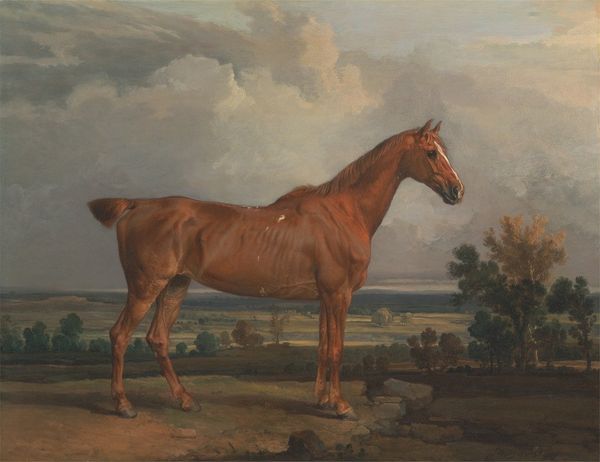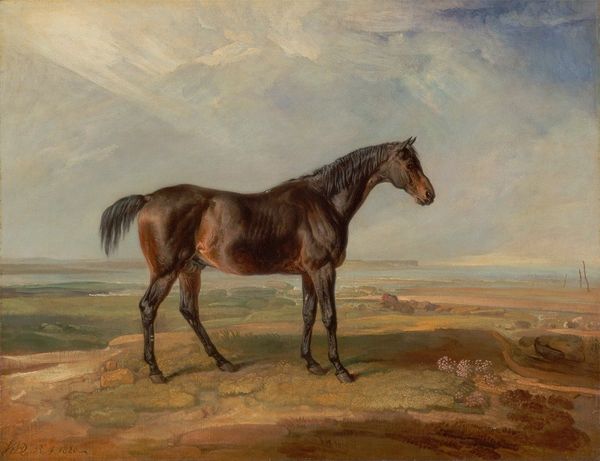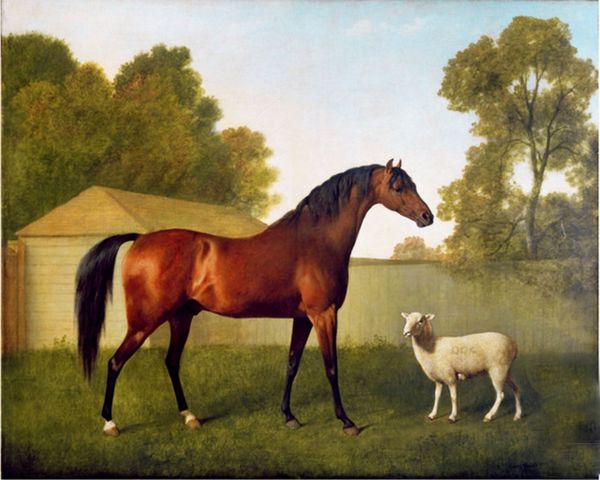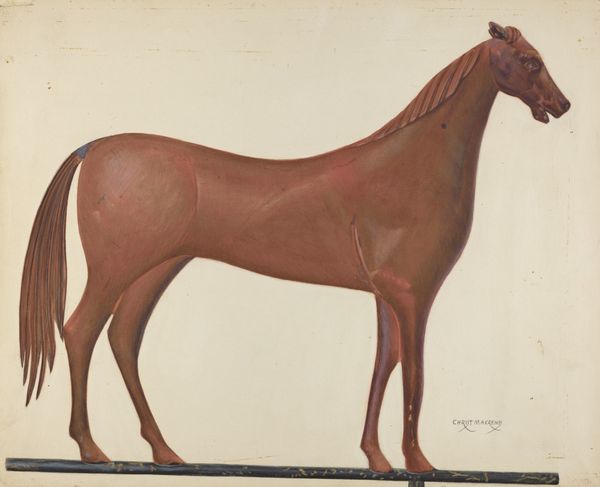
painting, oil-paint
#
portrait
#
painting
#
oil-paint
#
landscape
#
oil painting
#
romanticism
#
academic-art
#
erotic-art
#
realism
Copyright: Public Domain: Artvee
Editor: Here we have Johann Peter Krafft’s "Mold in front of a low wall," created sometime between 1840 and 1850, an oil painting on canvas. What immediately strikes me is the sheer physicality of the horse, so solid and present against the ethereal sky. How would you interpret this work? Curator: Let's consider the oil paint itself. Look at how the artist has manipulated the pigment to render the animal. What does the materiality of the paint suggest about Krafft’s intentions? He chose oil, a medium allowing for blending and luminosity. It speaks to the resources and labor involved in acquiring and working with these materials in the mid-19th century. What kind of statement is being made about access to materials and class? Editor: I see your point about access. It's not just *any* horse, is it? It's a pristine, almost idealized white horse. Does its whiteness have any relevance beyond aesthetics? Curator: The whiteness of the horse might allude to purity and power, often connected to aristocratic imagery. Notice how Krafft places it above the landscape and the common brick wall: The horse stands separate, almost untouchable. How might the breeding, training and display of this animal indicate systems of power at play in 19th century Europe? Editor: So the artwork is as much about the horse as it is about the societal structures that made its image and its very existence possible. The landscape behind suddenly feels…smaller, almost insignificant, when thinking about that perspective. Curator: Exactly. The means of production—from breeding the animal to the application of oil paint—reveal complex narratives about labor, class, and idealization that speak directly to broader economic realities. It forces us to consider the unseen efforts involved in creating and sustaining such images. Editor: It’s fascinating how a seemingly simple portrait can reveal so much about its social and material context. Thanks for opening my eyes to the materialist approach! Curator: My pleasure. Focusing on the “stuff” of art helps us understand its deeper cultural meaning and implications.
Comments
No comments
Be the first to comment and join the conversation on the ultimate creative platform.
